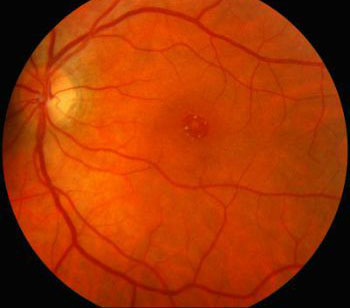https://www.youtube.com/watch?v=VNdjZ_Tngck
With age, the jelly-like liquid inside the eye called the vitreous separates from the back of the eye. This separation is a natural occurrence, and for most people, happens without complication. Sometimes, the vitreous does not completely separate from the back of the eye and remains attached to an area of the retina called the macula. This is called vitreomacular adhesion (VMA).
Asymptomatic VMA:
Vitreomacular adhesion occurs when the jelly-like liquid in the eye remains attached to the macula (the area of the retina responsible for clear, detailed vision). You may not be aware that this process has occurred because you may not have noticeable visual symptoms.
Symptomatic VMA/Vitreomacular Traction
If you have symptoms such as blurred or distorted vision, this is called symptomatic VMA or vitreomacular traction (VMT). With VMT, you will have visual symptoms, which may include:
- Distorted vision (wavy lines)
- Blurred central vision
- Reduced vision where small details are more difficult to distinguish
Symptomatic VMA is not normally associated with any eye pain, so it is important to share your symptoms with Dr. Comaratta.
How can symptomatic VMA be treated?
Currently, there are a number of options:
- In some cases, observation only may be recommended, as some cases of VMT will resolve on their own without intervention.
- Another option is the injection of an air or gas bubble, which will sometimes allow the vitreous gel to release away from the macula.
- Vitrectomy surgery is a third option, in which the doctor removes the vitreous in order to release the attachment to the macula. Surgery may be recommended, depending on the severity of your symptoms.
What happens if my VMT goes untreated?
If severe VMT is left untreated, the vitreous may continue to pull on the macula, leading to worsening visual symptoms and long term damage.

